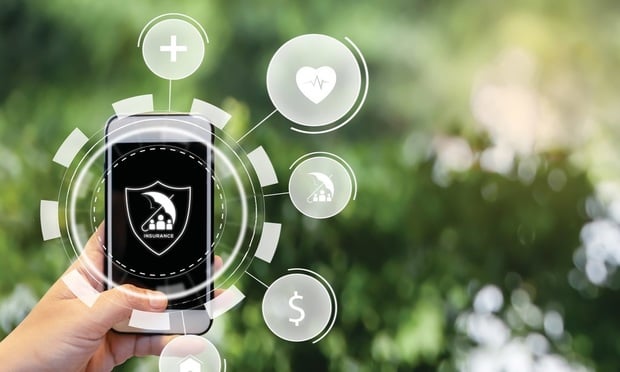New practical and consumer-facing applications for drone technology dominated the Consumer Electronics Show earlier this year with businesses and other large-scale organizations cashing in on the phenomenon.
Retail giants Amazon and Walmart have tested drones for home delivery, media outlets have used drones to film aerial news segments, and Spanish engineers have even developed drone technology with thermal vision that could be used to catch poachers in Africa.
However, another industry — one that doesn't quite have the reputation for employing cutting-edge technology — is effectively and efficiently using drones: the insurance industry.
As technology and digital engagement accelerate at an exponential pace in other industries, the insurance industry has recognized the incredible opportunity to invest in technological trends like telematics, the Internet of Things and drones. Using these new technologies signifies an improved way to successfully capture, store and cull data, which ensures better, more-targeted insurance products for customers and reduction in future losses.
When it comes to insurance, drone technology has numerous everyday use cases from underwriting, to loss prevention, to claims adjusting, to disaster recovery.
Related: World drone market seen nearing $127 billion in 2020, PwC says
For example, drone flyovers can help verify structures and square footage while showing hazards like fallen trees and cracked walkways to validate the condition of a site. Drones can reach geographically dispersed structures and other hard-to-reach places more easily than surveyors or brokers, and can transmit valuable data seamlessly. They can also aid in identifying building and property issues like cold weather damage to reduce claims earlier and settle claims disputes quicker.
By implementing drone data into an insurer's daily routine, underwriters and claims adjusters are able to increase the speed, accuracy and ease of gathering data on buildings and areas needing to be insured, which is vital when servicing them at claims time.
Just as the emergence of drones promises increased ease and speed of gathering information that underwriters and claims adjusters need, insurers must consider certain details before implementing this technology. Here are five things that insurers need to know before they make the decision to implement drones into their practice:

The type of data you're gathering will determine the kind of camera you need. (Photo: iStock)
1. Start with the data, not the drone
The first question insurers must ask is: What type of data do you need?
Answering this question will aid in the selection of hardware for the job, including the type of drone you plan to use. Different aircraft have different uses, whether you plan to fly over one rooftop, a neighborhood or a set of neighborhoods for a long period of time.
Defining the quality of data needed will narrow down more minute hardware features as well, including data resolution, lens, type of camera and sensor resolution. For example, different camera types excel at highlighting different types of risks, as a thermal camera detects hot spots and cold spots on a building while multispectral cameras can show potential risks such as a tree branch hanging over a rooftop.
Additionally, as drone data provides higher resolution imagery than both satellites and manned aircraft, drones are able to depict resolutions on sub-millimeter levels compared to satellites' 30- to 60-cm per pixel image resolution — giving drones a clear advantage come claims time. Not only are resolutions higher with drones, but data turnaround time is faster. Data can be gathered in minutes as opposed to days or weeks with satellites or manned aircrafts, allowing resources to be allotted for more frequent site surveys.

The FAA is scheduled to issue drone regulations in the latter half of this year. (Photo: Andrew Harnik/AP Photo)
2. Understand the regulations
Once you identify the type of data you want to collect and the hardware with which you will collect it, you must understand the applicable restrictions and regulations before your drone leaves the ground.
Businesses can test and use drones in low-risk, controlled environments with a Section 333 exemption from the Federal Aviation Administration. These exemptions apply to specific flight operations and only allow flights that take place during the daytime and within line of sight of the operator. Flights near structures, airports, and over-populated areas are restricted for most operations, but allowed with specific authorization.
It is important to note that the FAA plans to finalize rules for commercial drone operations later this year. As the final rules have not yet been decided, operators must stay abreast of ongoing developments to stay compliant with the latest FAA regulations as they are released.

Plotting a flight path (Photo: iStock)
3. Insist on autonomous flight
Another decision facing insurers when implementing drone technology is whether to choose manual versus autonomous flight — and autonomous flight is the way to go.
Autonomous flight enables safe and reliable data collection, including automatic takeoff and landing, which is vital as drones begin encroaching on prohibited territories. Autonomous flight also allows for pre-determined flight routes, contingency responses and sense-and-avoid technology to steer clear of obstacles like power lines and trees.
Pre-determined flight routes are a boon for insurers as pilots are able to use a tablet or laptop to plan a flight using onboard computers. Operators will be able to map out flight parameters, including where to fly, how photographs should overlap, what altitudes to fly at, and — most importantly — what happens if something goes wrong with the aircraft. If something does go wrong on the aircraft, there is no doubt that you would rather have your drone flying autonomously. However, having the right safety and compliance controls in place will mitigate any potential in-flight disasters.

Keep drones out of restricted areas. (Photo: iStock)
4. Require robust safety and compliance controls
As accidents happen, companies should consider integrating certain safety and compliance controls into their drone technology.
An important one to consider is geo-fencing technology, which allows drones to fly legally and safely while confining them to a specific area — you definitely don't want your drone entering a no-fly zone, like airports or national parks. If the drone approaches the edge of the geo-fence, it will return to the home location and land automatically, avoiding any interference or legal repercussions you may have potentially encountered when entering prohibited areas.
In conjunction with specific safeguards, insurers must also guarantee that their operators meet aviation authority requirements and are adequately trained, in addition to obtaining liability insurance. To succeed, standard operating procedures must be followed with an eye toward worker safety.

Insurers must protect policyholder information acquired through drones. (Photo: iStock)
5. Understand IT and security implications
Once you understand the legal ramifications of drone operations, security implications must be considered.
Building defenses into the operating system against hackers and security breaches is definitely a best practice, as drone technology will most likely entail some level of cloud computing and storage, which will function to transfer drone data into your company's claims management system.
With this in mind, insurers cannot ignore concerns about privacy and data security, and must safeguard policyholder information from hacking, eavesdropping and disaster. If proper measures are not taken to solidify security for drone communications, an insurer could end up with a hijacked drone as a result of data encryption.
In addition to security challenges, there may also be challenges regarding data storage, analysis and integration, including integrating drone software with claims management software and other business systems. Ideally, this type of integration will allow, for example, claims inspectors to open their laptops when they get to a site and view the flight plan and geo-fence as data is uploaded and integrated into the back office.
Ultimately, drone technology is beneficial to both insurers and their customers: It creates an avenue for both parties to be proactive about protecting assets and allows insurers to make decisions instantaneously with accurate data. With this technology, teams have an immense opportunity to hasten and improve data collection in numerous divisions of the industry so workers can access vital information when they need it, all while saving time, lowering costs and reducing the risk to human lives. The promise of these benefits alone is enough to incentivize insurers to embrace new technologies.
Satyen Paneri is the senior manager for product marketing, data and analytics at Foster City, Calif.-based Guidewire Software. Don Weigel is vice president of product and professional services at San Francisco-based drone systems company Airware.
Related: Drones are proving to be a valuable tool for adjusters
Want to continue reading?
Become a Free PropertyCasualty360 Digital Reader
Your access to unlimited PropertyCasualty360 content isn’t changing.
Once you are an ALM digital member, you’ll receive:
- Breaking insurance news and analysis, on-site and via our newsletters and custom alerts
- Weekly Insurance Speak podcast featuring exclusive interviews with industry leaders
- Educational webcasts, white papers, and ebooks from industry thought leaders
- Critical converage of the employee benefits and financial advisory markets on our other ALM sites, BenefitsPRO and ThinkAdvisor
Already have an account? Sign In Now
© 2025 ALM Global, LLC, All Rights Reserved. Request academic re-use from www.copyright.com. All other uses, submit a request to [email protected]. For more information visit Asset & Logo Licensing.








